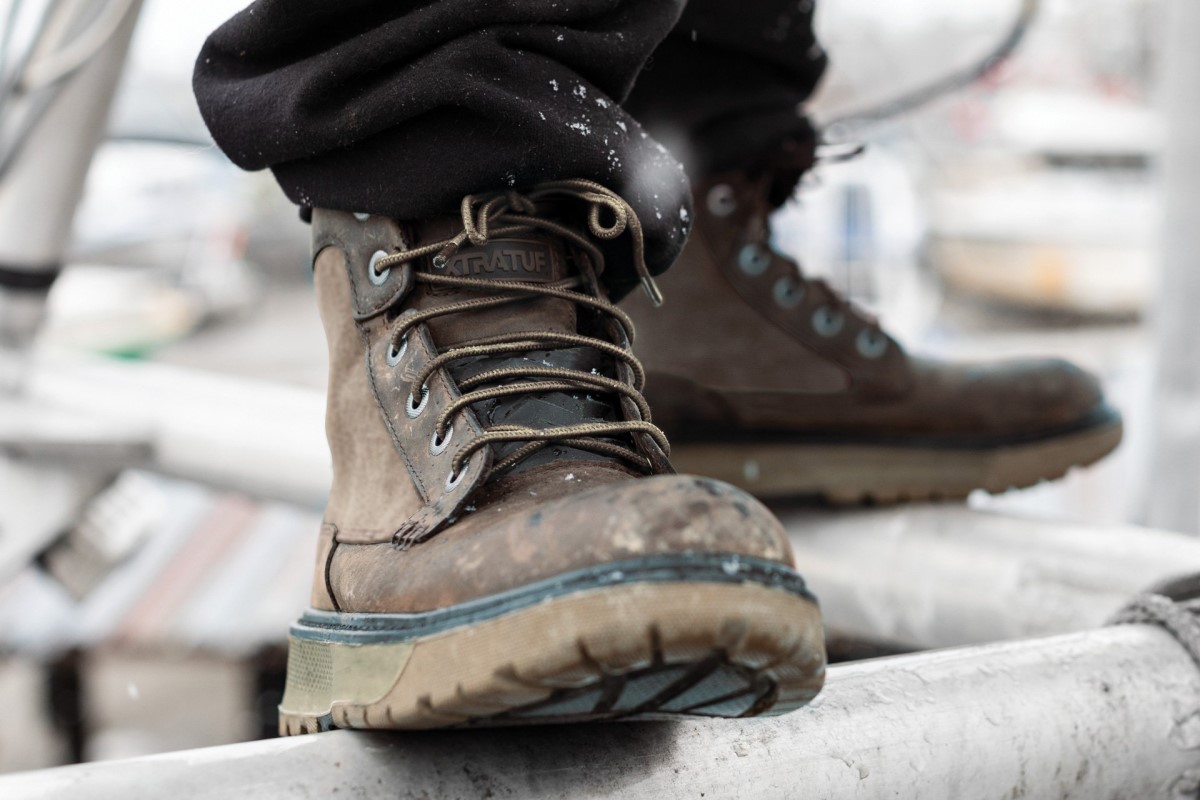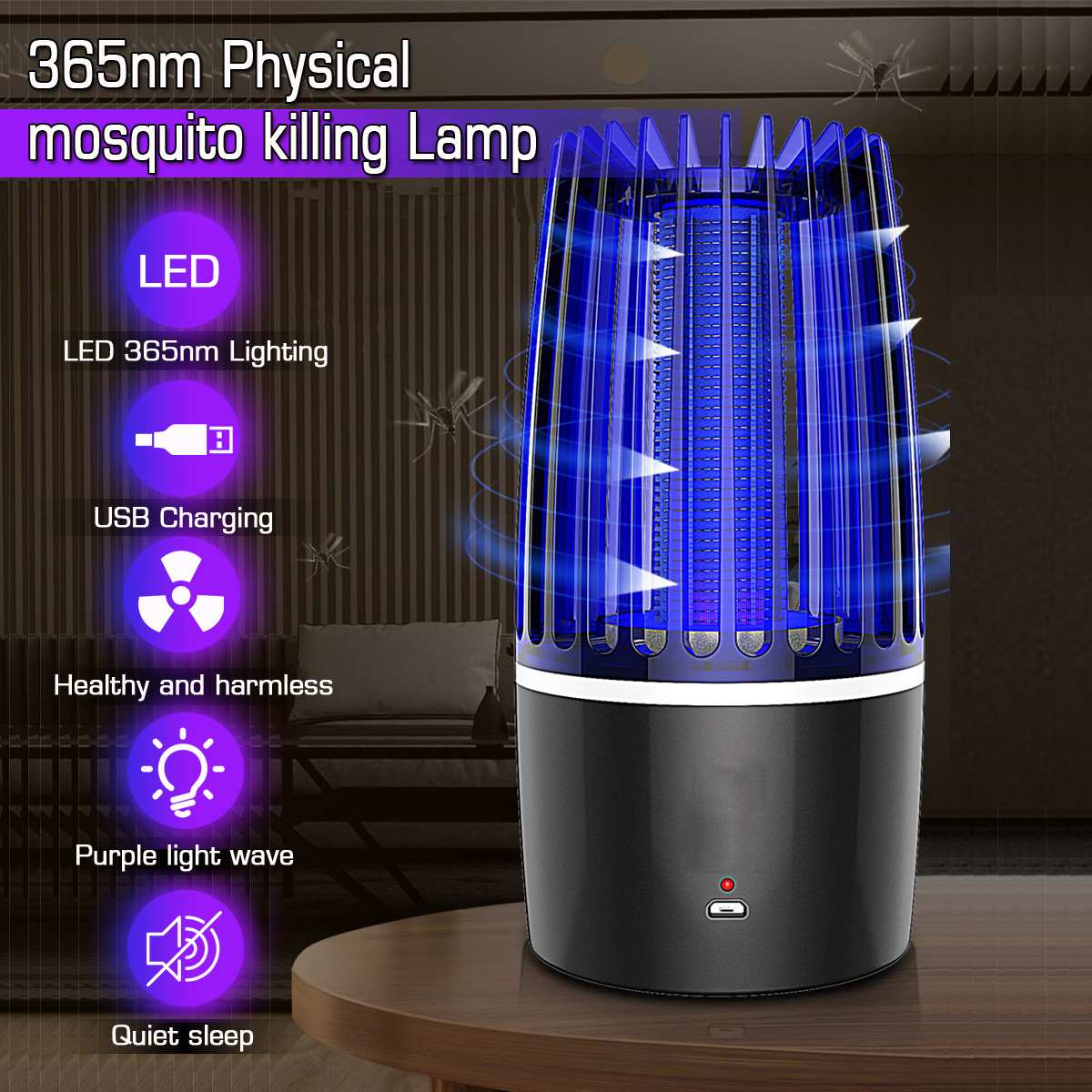Rocky Mountain National Park is one of the most popular parks in the United States, attracting over 3.5 million visitors each year. The park is located in North Central Colorado. If you want to experience this beautiful park without the crowds, backcountry camping in Rocky Mountain National Park might be a good option for you. Here are some tips on how to plan and prepare for your trip if you’re interested in spending a few nights under the stars in this National Park.
Table of Contents
- A Brief History Of Rocky Mountain National Park
- What Is Backcountry Camping
- What Are The Benefits Of Backcountry Camping In Rocky Mountian National Park
- Planning A Wilderness Camping Trip In Rocky Mountain National Park
- What You Need To Bring On A Rocky Mountain National Park Backcountry Camping Trip
- Tips For Staying Safe On A Rocky Mountain National Park Backcountry Camping Trip
- How To Practice Leave No Trace While Backcountry Camping In Rocky Mountain National Park
- What If I Do Not Want To Camp In The Wilderness
- Final Thoughts – Rocky Mountain National Park Backcountry Camping
- Frequently Asked Questions – Rocky Mountain National Park Backcountry Camping
- Contact Information For The National Park Service In Estes Park
A Brief History Of Rocky Mountain National Park
Rocky Mountain National Park was established in 1915 by the United States Government. It was the nation’s tenth established of the 423 national parks. The park is known for its rugged mountain peaks, alpine lakes, and forests. Rocky Mountain National Park spans 415 square miles and includes parts of two Colorado Wilderness areas.
What Is Backcountry Camping
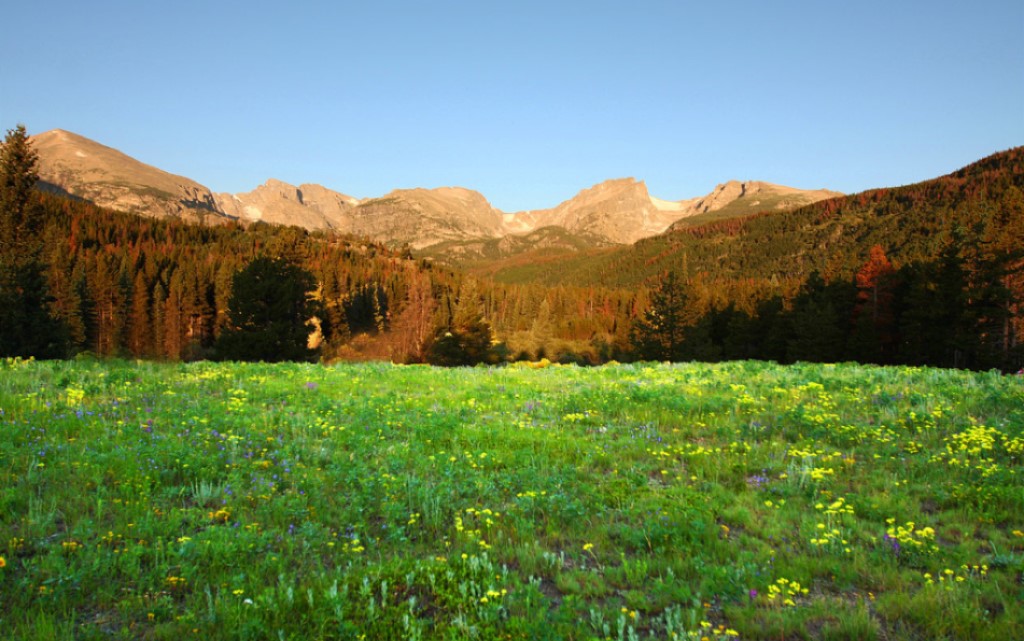
Backcountry camping is usually camping in an area that is not designated as a campground. This might include camping in a wilderness area, or in a more remote location where there are no official campsites. However, backcountry camping in Rocky Mountain National Park is limited to the designated wilderness camping locations.
Backcountry camping can be a great way to get away from the crowds and enjoy some peace and quiet in nature.
What Are The Benefits Of Backcountry Camping In Rocky Mountian National Park
When most people think of camping in Rocky Mountain National Park, they think of staying in one of the park’s campgrounds. However, there is another option for camping in the park – backcountry camping.
Some of the benefits of backcountry camping in Rocky Mountain National Park:
- Getting away from the crowds and into some of the most pristine and beautiful areas in the park.
- Experiencing nature in a way that is not possible when staying in a campground.
- Having the opportunity to see wildlife that you would not see if you were in a campground.

Planning A Wilderness Camping Trip In Rocky Mountain National Park
If you are interested in wilderness camping in Rocky Mountain National Park, there are two major things you need to know. The first is that backcountry camping is allowed only in certain areas of the park. I have included a downloadable map of these designated sites. The second thing you need to know is that backcountry camping requires a permit, which can be obtained from the park’s backcountry office.
There is quite a bit of planning and preparation necessary for this trip. It would be a good idea to start planning up to six months before your planned trip.
Choosing One Of The Designated Backcountry Campsites

There are several factors to consider when making your choice of one of the wilderness campsites:
- The Amount Of Time You Have For Your Trip – some campsites are more remote than others and require more time to reach.
- The Type Of Terrian You Will Be Camping On – some campsites are located in alpine areas with steep, rocky terrain, while others are in more forested areas.
- The Amount Of Elevation Gain You Are Willing To Do – some campsites are at higher elevations and involve significant elevation gain. If you are coming from a lower elevation area, you should get to the area early and become acclimated to the altitude. Even the trailheads are at a high elevation and unacclimated people could end up with altitude sickness.
- The Distance From The Nearest Trailhead – some campsites are much farther from the nearest trailhead than others.
- The Weather – remember that the alpine areas in Rocky Mountain National Park can be quite cold and windy even in the summer months.
- Clothing – you will need to be prepared for a wide range of temperatures and weather conditions.
- Camping Gear – you will need to carry all of your camping gear with you on your backcountry trip.
Designated Wilderness Campsites
There are a total of thirteen designated wilderness campsite areas in Rocky Mountain National Park. For more information on these areas see the Wilderness Designated Site Details page.
- North Fork Area
- Mummy Range Area
- Bear Lake Area
- Longs Peak Area
- Wild Basin Area
- East Inlet Area
- North Inlet Area
- Tonahutu Area
- Timber Lake Area
- Never Sumer Area
- Hague Creek Area
- Sprague Lake Wheelchair Accessible Campsite
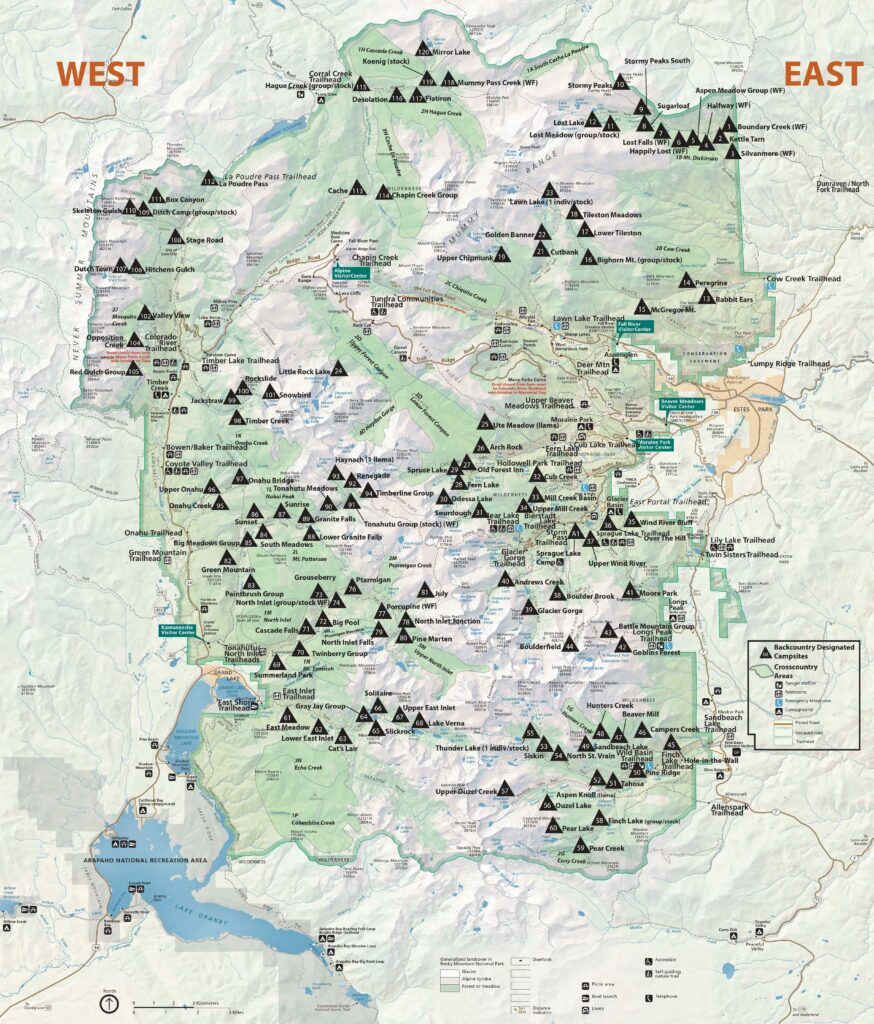
During your trip planning for your camping trip, make sure that you check trail descriptions to be sure the hike will match your physical capabilities.
Technical Orienteering Cross-Country Zones (No Trails)
In addition to the designated wilderness campsites, there are also areas in Rocky Mountain National Park where camping is allowed in “technical orienteering cross-country zones” (areas without trails). These areas are typically more open and exposed than the designated campsites and should only be used by those who are familiar with route finding and backcountry camping.
CLICK HERE to download the Technical Orienteering Cross-Country Rules And Zones
Technical Climbing Bivouac Zones
Rocky Mountain National Park also has areas where camping is allowed in “technical climbing bivouac zones” (areas with cliffs and rock formations). These areas are often used by climbers who are looking for a place to spend the night and make an early start on their climb. Camping is only allowed in these areas if you are actually engaged in technical climbing.
CLICK HERE to download the Technical Climbing Bivouac Zones Rules And Zones
Wilderness Stock Sites
Wilderness stock sites are sites that are specifically set aside for users that want to use stock to get into the backcountry. According to the National Park Service, stock includes horses, mules, burros, and llamas.
These sites are subject to change due to rapidly changing conditions associated with the infestation caused by native pine beetles. Be sure to contact the Wilderness Office (970-586-1242) for current conditions, regulations, and requirements.
CLICK HERE to download the Wilderness Stock Sites Rules And Zones
Winter Wilderness Camping
Camping in Rocky Mountain National Park is a unique and wonderful experience, no matter what time of year you go. However, if you’re looking for a truly special and memorable camping trip, consider going during the winter! While some areas of the park are inaccessible due to heavy snowfall, there are plenty of spots that are perfect for a winter wilderness camping adventure.
One of the best things about camping in Rocky Mountain National Park during the winter is the peace and solitude that you can enjoy. Since most people avoid venturing into the park during these months, you’ll likely have the trails and campsites all to yourself. And, with all of the snow-capped peaks and frozen lakes as your backdrop, you’re sure to have an unforgettable trip.
Just be sure to come prepared for the colder weather. Make sure you have plenty of warm clothes, a good tent and sleeping bag, and all of the other supplies you’ll need. Also, be aware that the temperatures can drop below freezing at any time, so be sure to pack some extra warm gear just in case.
If you’re looking for a unique and unforgettable camping experience, consider winter camping in Rocky Mountain National Park! With its stunning scenery and peaceful atmosphere, you’re sure to love it.
CLICK HERE to download the Winter Wilderness Camping Rules And Zones
Obtaining Backcountry Camping Permits For Rocky Mountain National Park
Rocky Mountain National Park offers opportunities for backcountry camping in designated areas only. A backcountry permit is required and can be obtained by making an online reservation with the National Park Service. You will then pick up your permit at the Backcountry Camping Office located in the Headquarters Wilderness Office (beside the Beaver Meadows Visitor Center on Highway 36 west of Estes Park, CO) or at the Kawuneeche Visitor Center (Highway 34, north of Grand Lake, CO). If you are picking up your permit the day of your trip, arrive early because you must pick it up before noon or it will be canceled.
How Does The Quota Work For The Wilderness Camping Permit?
The park has a quota for the number of people who can stay in the backcountry each night. This ensures that the park’s wilderness remains pristine and allows visitors to experience nature without feeling like they are in a city park. The quota is also necessary to ensure that visitors have an adequate opportunity to get a camping permit.
- A limit of 3 nights in a row has been placed on campsites in one camp area.
- Each of the individual designated campsites is for small groups and will accommodate parties of up to seven people.
- Group sites are designated sites for large groups and can accommodate parties of eight to twelve people.
- The impact that is caused by the interaction of larger groups between sites has caused a limit on groups over seven people camping in neighboring individual sites.
- Larger groups must use group sites or split up and camp at least 1 mile (1.6 kilometers) apart.
For more information on the quota system, contact one of the wilderness offices.
Wilderness Permit Fees And Cancellations
To obtain a wilderness permit to be able to go wilderness camping there is an additional fee above the typical park entrance fee. In addition, cancellation and change policies for your permit are strictly adhered to.
Wilderness Camping Fees
- Reservation Fee: $6
- Wilderness Administrative Fee: $30
- Total: $36
Entry to all National Parks requires a separate fee or National Parks Pass. Note: the wilderness permit will serve as a timed-entry permit for the duration of your trip.
Cancellation, Change, And No Show Policies
Cancellation Policy:
- The start date of the permit CAN NOT be modified.
- The only way to change the start date of a trip is to cancel an existing reservation and book a new reservation.
- A permit CAN be canceled before the permit is issued or printed. However, there will be no refunds if there is a cancellation of a permit reservation.
Change Policy:
After the permit is created, it CAN be modified for the following items:
- Itinerary Locations
- Group Size
- Entry & Exit Points
- Vehicle Information
- Issue Station
- Stock
- Emergency Contact.
No Show Policy:
- Be sure to arrive early since all permits that are not picked up before noon on the day your trip begins may be canceled.
- If necessary, it is possible to call before the noon deadline and let the park service know you will arrive late. They will then hold the permit.
- If you are not going to use the reservation, notify the Wilderness Office beside the Beaver Meadows Visitor Center or the Kawuneeche Visitor Center. They may be able to allow others to use the permit.
- The $36 Wilderness Administrative Fee is non-refundable and non-exchangeable.
What You Need To Bring On A Rocky Mountain National Park Backcountry Camping Trip
Besides your permit and ID, there are a few other items you will need to bring on your backcountry camping trip.
- Backpack: You will need a good-quality backpack that is large enough to carry all of the gear you will need for your trip.
- Sleeping Bag: A good quality sleeping bag is important for keeping you warm and comfortable at night.
- Shelter: You will need some type of shelter to protect you from the elements. This could be a tent, tarp, or bivy sack.
- Lightweight Cooking Gear: You will need to be able to cook your food and make coffee or tea. A lightweight stove and pots/pans are ideal.
- Warm Clothing: It is important to pack clothing that will keep you warm, even when wet. Items such as a down jacket, wool socks, and a hat are essential.
- Rain Gear: Make sure to pack some rain gear, just in case it rains.
- Quality Boots: A good pair of boots is essential for a safe and enjoyable trip. Make sure they are broken in before you leave.
- Food and Water: It is important to bring enough food and water for your trip. You should also have a way to purify water if necessary.
- First Aid Kit: A backcountry first aid kit is essential for any camping trip.
- Fire Starter: A fire starter is a must-have item for making campfires.
- Multi-tool: A multi-tool can come in handy for many tasks while camping.
- Bear Spray: Bear spray is a must-have item for camping in bear country.
- Bear Canister: If you are camping in a bear area, you will need to have a bear canister to store your food in.
- Campsite Selection Map: Bring a map of the area in which your permit is valid.
- Additional Items: You may also want to bring items like a map, compass, headlamp, and sunglasses.
The above items are just a few of the things you will need for a successful backcountry camping trip in Rocky Mountain National Park.
Tips For Staying Safe On A Rocky Mountain National Park Backcountry Camping Trip
When camping in Rocky Mountain National Park’s backcountry, it is important to take the necessary precautions to stay safe. Here are a few tips to help you have a safe and enjoyable trip:
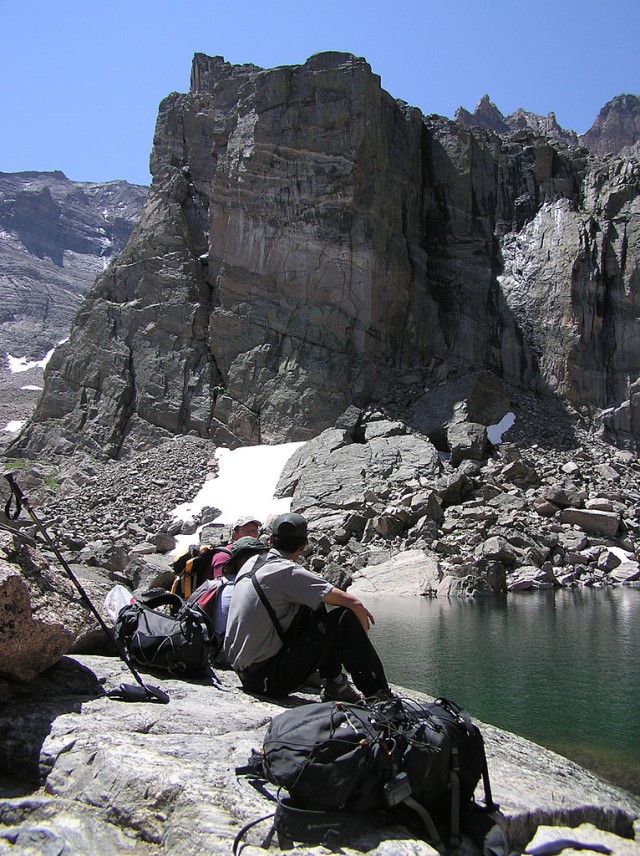
- Always let someone know where you are going and when you expect to return.
- Make sure your camping gear is in good condition and that you know how to use it properly.
- Carry a map of the area and know how to use it.
- Be familiar with the wildlife in the area and take precautions to avoid encounters.
- Make sure you have plenty of food and water. You should also know how to properly treat water before drinking it.
- Dress appropriately for the weather conditions and terrain.
- Take your time while hiking and be aware of your surroundings.
Bear Safety While Rocky Mountain National Park Backcountry Camping
One of the biggest dangers while camping in the backcountry is encountering a bear. Bears can be dangerous, especially if they are feeling threatened or are protecting their food.
Here are a few things to keep in mind to help stay safe around bears while camping:
- Never approach or try to feed a bear.
- If you see a bear, stay calm and back away slowly. Do not run or make sudden movements.
- Make noise while hiking to avoid surprising a bear.
- If you encounter a bear, be prepared to use your bear spray.
- Use food storage by storing food and garbage in a bear-proof container.
Camping in Rocky Mountain National Park can be a rewarding and enjoyable experience, but it is important to be prepared for all of the risks associated with it. By following the tips above, you can help ensure a safe and fun trip.
How To Practice Leave No Trace While Backcountry Camping In Rocky Mountain National Park
Rocky Mountain National Park offers vast and unparalleled opportunities for backcountry camping. While the experience can be truly rewarding, it’s important to practice Leave No Trace principles to minimize your impact on the park.
Here are the seven principles of Leave No Trace compliant while camping in the backcountry:
- Plan ahead and prepare: Know what park regulations you need to follow and what gear you’ll need.
- Travel and camp on durable surfaces: Avoid trampling vegetation and camping in areas that are wet, muddy, or have obvious signs of wildlife activity.
- Dispose of waste properly: Pack out all trash and toilet paper. If you must bury your waste, use pit toilets, and do so at least six inches below the surface and 200 feet from water sources.
- Leave what you find: Leave rocks, plants, and other natural objects as you find them.
- Minimize campfire impacts: Use a stove for cooking whenever possible. If you must have a fire, use existing fire rings and only burn dead wood. Never leave fires unattended and make sure to extinguish them completely before leaving.
- Respect wildlife: Do not feed or disturb wildlife and remember that they are wild animals. Bring food storage when staying in the park.
- Be considerate of other visitors: Keep noise levels to a minimum, camp away from trails, and avoid disturbing others.
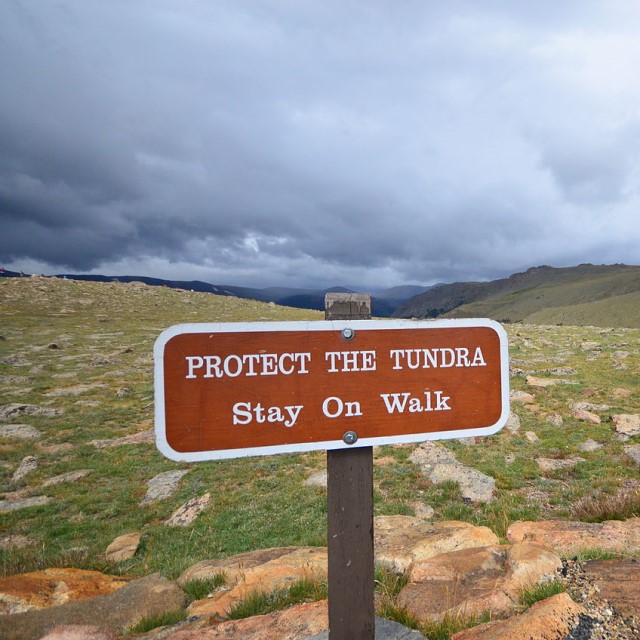
Following these simple principles will help ensure a safe and enjoyable experience while camping in Rocky Mountain National Park. For more information, please visit the Leave No Trace website.
What If I Do Not Want To Camp In The Wilderness
If camping in the wilderness sounds like it is a little too much for your camping trip, then there are five developed campgrounds that you could look into. Please be aware that these campgrounds have different camping regulations than the wilderness regulations. In addition, camping dates may be different.
Reservable Developed Campgrounds
You must also plan ahead if you are hoping to stay in one of these campgrounds since most sites in these campgrounds are reserved well in advance. If you would like to check availability or a reservation for one of these campgrounds, CLICK HERE.
- Aspenglen Campground – East Side of the park – Open for summer camping only.
- Glacier Basin Campground – East Side of the park – Open for summer camping only.
- Moraine Park Campground – East Side of the park – This campground is open for reserved camping in the summer; however, it is the only campground that is available first come, first-served in winter.
- Timber Creek Campground– West Side of the park – Open to summer camping only. Warning – Due to a mountain pine beetle infestation the is no shade at this campground. This is because most of the dead trees had to be removed.
First-Come, First-Served Developed Campgrounds
- Longs Peak Campground – Designated as a tent only and is only open in the summer.
Final Thoughts – Rocky Mountain National Park Backcountry Camping
Rocky Mountain National Park offers vast and unparalleled opportunities for backcountry camping, with a variety of different landscapes to choose from.
- Be sure to plan and prepare well in advance for your trip.
- Do your research and pick a campsite and several alternatives before you apply for a permit.
- Apply for a permit for a wilderness campsite.
- While the experience can be rewarding, it’s important to practice Leave No Trace principles to minimize your impact on the park.
- If camping in the wilderness sounds too much for you, there are five developed campgrounds to choose from.
- Reservations are highly recommended for developed campgrounds and most sites fill up well in advance.
- Happy camping!
Frequently Asked Questions – Rocky Mountain National Park Backcountry Camping
Can you camp anywhere in Rocky Mountain National Park?
No, camping is only allowed in designated campgrounds and designated backcountry campsites.
Can I use a tent or RV?
Tents are allowed in all campgrounds (Long Creek is tent only) and backcountry campsites, while RVs are only allowed in Timber Creek, Aspenglen, Glacier Basin, and Moraine Park campgrounds.
Is dispersed camping allowed in Rocky Mountain National Park?
No, dispersed camping is not allowed in Rocky Mountain National Park.
What are the backcountry campsites like?
Backcountry campsites vary depending on their location. Some sites have a designated tent pad while others do not. Some sites also have a fire ring and a bear box or food storage lockers.
Is there drinking water at the backcountry campsites?
There is no drinking water at the backcountry campsites, so you will need to bring your own or have the ability to purify/filter your own.
Can I hike in and camp the same day?
Yes, you can hike in and camp the same day.
Is backpacking allowed in Rocky Mountain National Park?
Yes, backpacking is allowed in Rocky Mountain National Park.
What are the trailhead quotas for backcountry camping?
The trailhead quotas are set by the National Park Service for backcountry campers and can vary depending on the time of year to help reduce the strain on park resources during the peak season.
Where can I find a map of the backcountry campsites?
You can download maps of the backcountry campsites on this post. CLICK HERE to get your map.
Can you overnight park in Rocky Mountain National Park?
Overnight parking is only allowed in the Timber Creek, Aspenglen, Glacier Basin, and Moraine Park campgrounds.
Is there a fee for backcountry camping?
Yes, the National Park Service charges a fee for backcountry campers in Rocky Mountain National Park.
Contact Information For The National Park Service In Estes Park
Mailing Address:
Rocky Mountain National Park
1000 HWY 36
Estes Park, CO 80517
Phone Number:
(970) 586-1206
Ask for the Wilderness Office
(HOURS: 8AM – 4:30PM MDT ON WEEKDAYS AND 8AM – 12PM MDT WEEKENDS)
Featured Image Tony Webster from Minneapolis, Minnesota, United States, CC BY 2.0, via Wikimedia Commons






